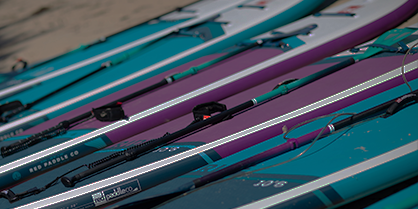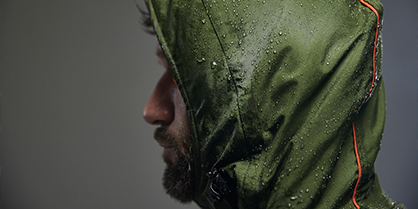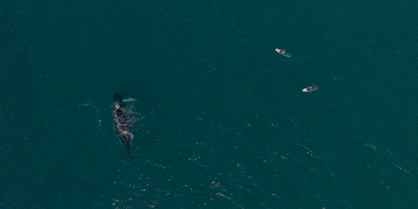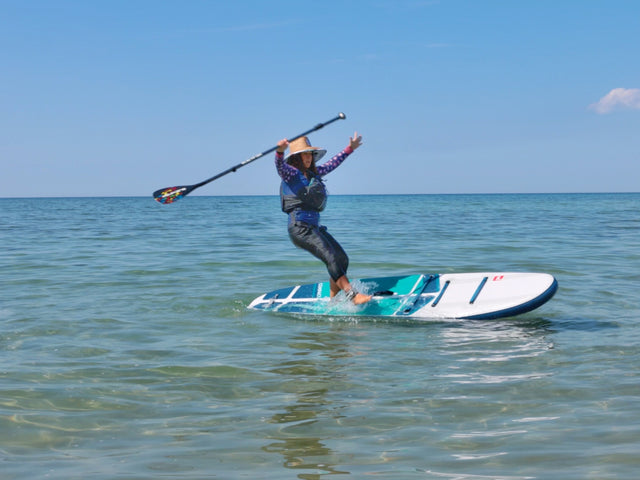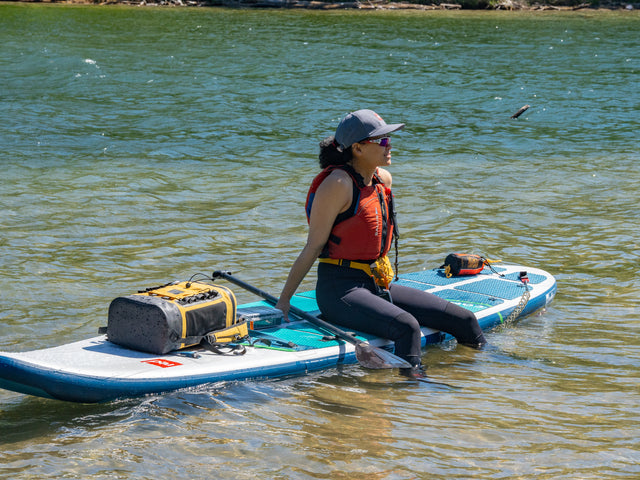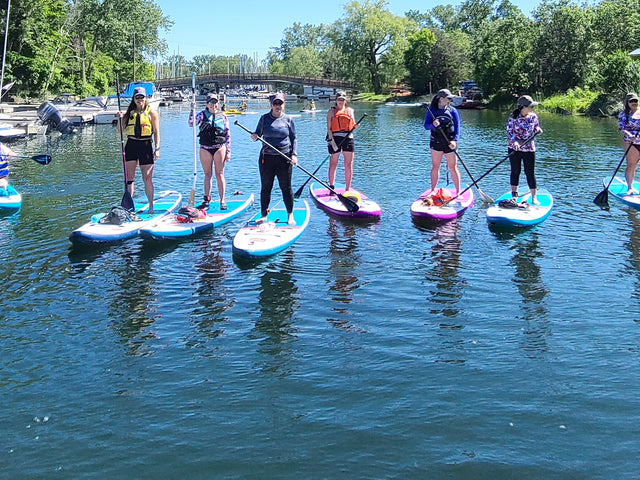
Originally published on paddleadventurer.com/how-to-paddle-board/

Paddle boarding is a fun and safe low-impact activity. It's a great way to get outside and adventure with friends, family or on your own.
Here are some instructions and tips on how to paddle board for beginners from Red Paddle Co ambassador Marybeth McLaughlin.
How to Paddle Board for Beginners
1. Getting Started
Here are the things you'll need: *see the blog on Requirments for Paddle Boarding in Canada
- PFD (personal flotation device)
- Whistle
- Leash
- Paddle
- Board
- A smile on your face!
2. Sizing Your Paddle
- Place the blade on the ground, and your hand over your head. With a slightly bent elbow, your hand should be able to reach and grab the top of the paddle where the t-bar handle is.

3. Holding Your Paddle
- The paddle blade should be angled forward facing away from you. Intuitively people hold it the opposite way thinking it will help scoop the water back but it will actually pull the water up and not propel you forward as efficiently
- For handle placement, hold the paddle over your head, and place one hand on the T handle and the other on the shaft. You want to create a 90-degree angle with your arms.
4. Launching
- To launch from a beach or other types of gradual walk-in locations, bring your board out far enough into the water, approximately knee deep. If it gets deep quickly turn your board around so your fins go in first to the deeper part of the water.
- For dock launches, set the board down in the water parallel to the boat dock.
- Getting on the board - the center of the board is where the handle is and is the widest part of your board and thus the most stable. Place one knee on either side of the board's handle and slowly transfer your weight.

5. Standing Up
- Get a little bit of motion with a paddle stroke or two to help with stability
- While holding the paddle place the paddle down in front of you across the board.
- Place your feet where your knees were, one at a time.
- Keep your knees bent, chest up and eyes on the horizon.
- Put your paddle in the water as soon as possible as it will help stabilize you.
- Keep in mind you don't have to stand up. It should be fun and not stressful!

6. Basic Paddle Stroke
- Place the entire blade of the paddle in the water as close as possible to the side (rails) of the board.
- Keep the blade and paddle shaft as vertical as possible as you pull the paddle back towards you in a straight line.
- Pull the paddle out of the water around your feet
- A common mistake is creating a C shape instead of an I shape making you turn and not move forward
- Switching sides every 2-3 strokes will also help you move forward in a straight line.

7. Losing Your Balance & Falling In
- Don't be afraid to fall! Everyone loses their balance even advanced paddle boarders. It's a great thing to practice.
- When you fall try to starfish into the water to avoid any potential underwater hazards.
- Keep your eyes on the horizon or something stable as well as have your paddle in the water to help stabilize you
Learning how to paddle board should be fun! There is no right or wrong way if you're out there enjoying yourself.


